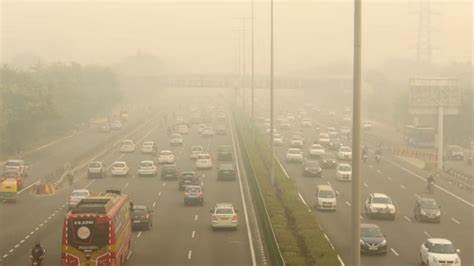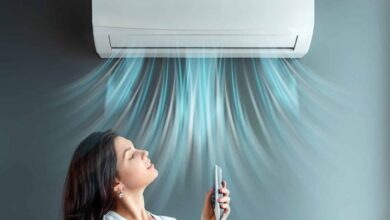Delhi to Enforce Stringent Odd-Even Rule to Combat Air Pollution Crisis from November 13 to 20

Delhi to Enforce Stringent Odd-Even Rule to Combat Air Pollution Crisis from November 13 to 20
In a determined effort to tackle the escalating air pollution crisis, the Delhi government is set to implement the widely discussed odd-even rule for vehicles in the national capital. The decision, announced by Delhi’s Environment Minister Gopal Rai, comes as the city grapples with deteriorating air quality, especially after the festive season of Diwali. The odd-even scheme, slated to be in effect from November 13 to November 20, aims to reduce vehicular emissions and mitigate the hazardous smog that has become an annual woe for the city’s residents.
The Commission for Air Quality Management (CAQM) has already imposed Stage IV of the Graded Response Action Plan (GRAP) in the Delhi-NCR region. This move underscores the severity of the pollution crisis and necessitates stringent measures to safeguard public health. As we delve into the details of this decision and its potential impact, it becomes clear that the odd-even rule is a crucial step toward improving the air quality in Delhi.
Understanding the Odd-Even Rule
The odd-even rule, a tried-and-tested approach, restricts vehicles with certain license plate numbers from plying on the roads on specific days. In Delhi’s case, this means that vehicles with license plate numbers ending in an odd digit (1, 3, 5, 7, 9) will be allowed to operate on certain days, while those ending in even digits (0, 2, 4, 6, 8) will be permitted on different days. This temporary measure intends to reduce traffic congestion and, more importantly, the emissions of harmful pollutants from vehicles.
The Seasonal Challenge of Air Pollution in Delhi
Delhi’s air quality tends to deteriorate significantly during the winter months, largely due to a combination of factors. The Diwali festival, marked by the widespread use of fireworks, contributes to a sharp increase in particulate matter in the atmosphere. Coupled with the onset of winter, which leads to temperature inversions and reduced dispersion of pollutants, the city often finds itself enveloped in a toxic smog. This noxious cocktail of pollutants poses a severe threat to public health, with a range of respiratory and cardiovascular issues becoming prevalent among residents.
The Role of the Odd-Even Rule
The odd-even rule has been employed in Delhi on several occasions in recent years as a temporary measure to combat air pollution. While it’s not a silver bullet solution, it can contribute significantly to reducing emissions. By limiting the number of vehicles on the road each day, the rule helps mitigate traffic congestion, which is a major contributor to air pollution. Less time spent idling in traffic and more efficient traffic flow can lead to a reduction in fuel consumption and, consequently, lower emissions of pollutants.
The odd-even rule is relatively simple to enforce and has garnered mixed reactions from the public in the past. While it may be inconvenient for some, many citizens recognize its necessity in combating the dire air quality situation that grips the city each year. It is a collective effort aimed at safeguarding the health and well-being of all Delhiites.

Past Success and Criticisms
The odd-even rule has been implemented in Delhi during previous pollution crises, and it has shown promising results. During its trial phases, it led to a noticeable reduction in vehicular emissions and improved air quality to some extent. However, it has also faced its fair share of criticisms.
One common criticism is that the rule may not be as effective as desired, as it primarily targets private vehicles. Commercial vehicles, construction activities, and industrial emissions remain significant contributors to air pollution, and addressing these issues requires a more comprehensive approach. To truly combat Delhi’s air pollution, experts emphasize the importance of controlling emissions from various sources, not just private vehicles.
Another challenge is related to the feasibility and implementation of the rule. The success of the odd-even scheme depends on strict enforcement, adequate public transportation alternatives, and effective communication with the public. In the past, the enforcement of penalties for violations and the availability of public transportation during the rule’s implementation have been points of concern.
Preparations for the Upcoming Odd-Even Rule
The Delhi government, under the guidance of Environment Minister Gopal Rai, is gearing up for the enforcement of the odd-even rule from November 13 to November 20. The authorities have been working to address the logistical challenges that have arisen in previous implementations. The city’s public transportation system, including buses and the metro, is expected to be bolstered to accommodate the increased demand during this period.
To ensure the smooth implementation of the rule, strict enforcement measures will be put in place. Special teams and traffic police will be deployed to monitor compliance and impose fines on violators. This time, the government aims to leave no room for leniency, recognizing the critical nature of the air quality situation.
Additionally, the government is actively promoting the use of electric vehicles (EVs) during the odd-even period. EVs are known for their lower emissions and can play a pivotal role in reducing air pollution. Incentives and discounts on EVs and electric charging infrastructure are expected to be part of the strategy to encourage citizens to switch to cleaner modes of transportation.
The Role of Public Participation
For the odd-even rule to be truly effective, it relies on the active participation of the public. Delhiites are encouraged to carpool, use public transportation, and, if possible, opt for environmentally friendly modes of commuting during this period. Public awareness campaigns will be launched to educate citizens about the importance of their participation in reducing air pollution.
Delhi’s residents have, in the past, shown their commitment to mitigating the pollution crisis. Many have voluntarily adhered to the odd-even rule, recognizing that their individual actions can collectively make a difference in the city’s air quality.
The Broader Approach to Air Quality Management
While the odd-even rule is a valuable tool in the fight against air pollution, it should be considered as part of a more comprehensive strategy. Controlling vehicular emissions is just one piece of the puzzle. The Delhi government, along with relevant authorities and experts, needs to address various other aspects contributing to the city’s air pollution woes.
1. Industrial Emissions: Delhi’s industrial areas are a significant source of air pollution. Ensuring that industries adhere to strict emission norms and reducing industrial pollution is crucial.
2. Construction Activities: Dust from construction sites is a significant contributor to particulate matter in the air. Effective dust control measures on construction sites can make a substantial difference.
3. Agricultural Stubble Burning: The practice of burning crop residues in neighboring states contributes to the worsening of Delhi’s air quality, especially in the post-monsoon months. Coordinated efforts to address this issue are necessary.
4. Waste Management: Poor waste management practices lead to open burning of waste, releasing toxic pollutants into the atmosphere. Implementing efficient waste management systems can help mitigate this problem.
5. Promotion of Green Spaces: Increasing green cover in the city can help absorb pollutants and improve overall air quality.
6. Promotion of Electric Vehicles: Encouraging the adoption of electric vehicles, not just during the odd-even rule but on a long-term basis, can significantly reduce vehicular emissions.
7. Public Awareness: Educating the public about the impact of air pollution on health and the environment is crucial. Behavior change campaigns can motivate citizens to make more environmentally conscious choices.
Air Pollution’s Health Implications
The urgency to combat air pollution in Delhi is underscored by the severe health implications it carries. Poor air quality can lead to a range of health issues, including respiratory problems, cardiovascular diseases, and even premature death. Children, the elderly, and individuals with pre-existing health conditions are particularly vulnerable.
Long-term exposure to air pollution has been linked to conditions like asthma, bronchitis, lung cancer, and heart disease. Moreover, it can have detrimental effects on cognitive function and overall well-being. Addressing air pollution is not just an environmental concern but a critical public health imperative.
International Examples
To tackle air pollution, Delhi can draw inspiration from other cities around the world that have successfully implemented measures to improve air quality.
Beijing, China: Beijing faced severe air pollution issues, often compared to Delhi’s situation. The city implemented strict regulations on industrial emissions, vehicular emissions, and construction activities. Additionally, Beijing invested heavily in public transportation and encouraged the use of electric vehicles. These measures have significantly improved the city’s air quality.
London, UK: London has implemented a congestion charge system, which reduces traffic in certain areas during peak hours. The city has also introduced strict emission standards for vehicles entering the city, leading to a substantial reduction in air pollution.
Bogotá, Colombia: Bogotá has been successful in promoting cycling as an alternative mode of transportation. The city’s extensive network of dedicated bike lanes has encouraged residents to use bicycles for commuting, reducing the number of vehicles on the road.

The Way Forward
The odd-even rule, set to be enforced from November 13 to November 20, is a significant step toward addressing Delhi’s air pollution crisis. However, it should be seen as just one part of a comprehensive strategy to improve air quality. The government, along with the active participation of the public, must take a multi-pronged approach to combat air pollution effectively.
This approach should include strict enforcement of emission norms for industries, controlling construction site dust, addressing agricultural stubble burning through regional cooperation, and improving waste management practices. Additionally, the promotion of green spaces, electric vehicles, and public awareness campaigns will play vital roles in the overall efforts to curb air pollution.
It is crucial for Delhi to prioritize the health and well-being of its residents by taking bold, comprehensive measures to combat air pollution. The odd-even rule, while temporary, can serve as a reminder of the urgent need for sustainable, long-term solutions to protect the city from the annual smog that has become synonymous with winter in the national capital. By working together, Delhiites can breathe cleaner air and enjoy a healthier future.





